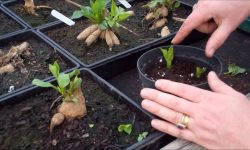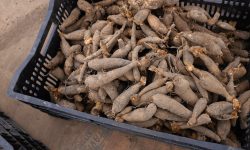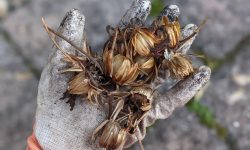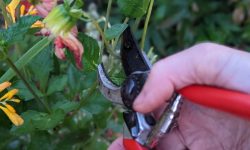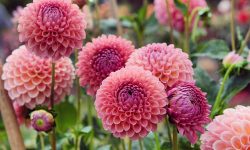Kalanchoe, with its clusters of vibrant blooms and thick succulent leaves, is more than just a houseplant — it’s a symbol of resilience and color that brightens any corner of your home. But for all its charm, keeping it blooming beautifully season after season requires a little know-how. One of the most important techniques to master is pruning. Done correctly, it can transform your kalanchoe into a lush, repeat bloomer that thrives year-round.
Whether you’re a seasoned plant enthusiast or a curious beginner, learning how to prune kalanchoe the right way can make all the difference. In this guide, you’ll uncover expert tips, step-by-step advice, and seasonal techniques to help your plant stay compact, healthy, and full of life. Ready to make your kalanchoe bloom longer and better than ever? Let’s get started.
Understanding Kalanchoe Growth Habits
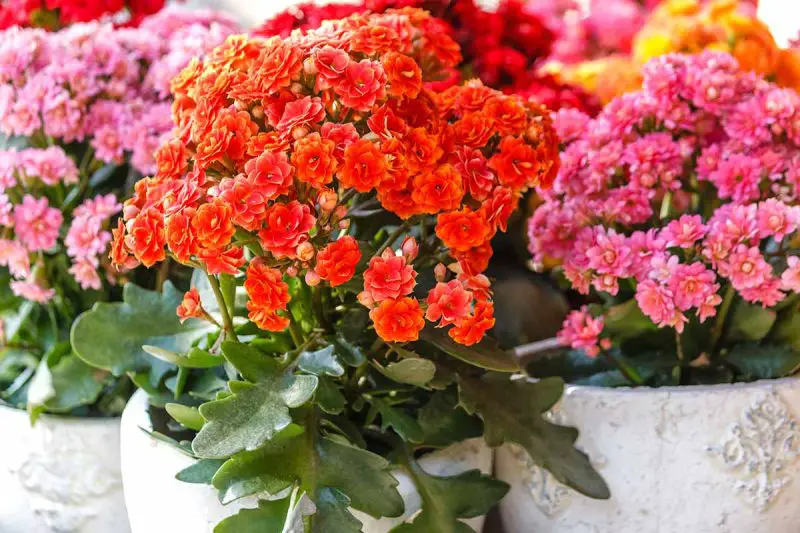
Natural Growth Patterns
Kalanchoe is a compact, bushy succulent with fleshy leaves and bright flowers that bloom in clusters. Most kalanchoe varieties bloom in winter or early spring and then enter a rest period. During active growth, the plant may become leggy, especially if it’s not receiving enough light.
Kalanchoe plants follow a cycle of blooming followed by a dormancy phase, where energy is directed to root and leaf development rather than flowers. During this time, stems may stretch out and lose their compact shape. If left unpruned, this legginess can lead to a sparse, top-heavy appearance that detracts from the plant’s natural charm. Pruning encourages denser branching, which helps the plant maintain a full and healthy shape year-round.
Types of Kalanchoe
There are several popular varieties, including Kalanchoe blossfeldiana, known for its bright red, pink, or orange flowers. Others include Kalanchoe pinnata and Kalanchoe tomentosa, each with slightly different growth forms and needs. Understanding the specific type of kalanchoe you have will help tailor your pruning approach.
Kalanchoe blossfeldiana typically has a more compact form and benefits from light pruning after flowering to maintain its bushiness. Kalanchoe tomentosa, or panda plant, is mainly grown for its velvety foliage and may only need occasional trimming to remove dead or damaged leaves. Kalanchoe pinnata, with its upright stems and potential for significant height, often requires more regular pruning to encourage lateral growth and keep the plant manageable indoors.
Why Pruning Is Essential for Kalanchoe
Encourages More Blooms
Regular pruning plays a crucial role in the blooming cycle of kalanchoe. By trimming back old flowers and encouraging the development of new growth, you stimulate the plant to produce additional buds. Each time you remove a faded flower stalk, the kalanchoe redirects its energy from seed production to forming new flower clusters. This not only prolongs the blooming period but also intensifies the display of color. With consistent pruning, the plant remains in a near-constant state of renewal, producing successive waves of vibrant blossoms.
Maintains Compact Shape
Kalanchoe is naturally a bushy succulent, but without regular trimming, it tends to grow tall and sparse, especially in low-light indoor settings. Pruning helps preserve its neat, compact silhouette, making it ideal for display on windowsills, tabletops, or as a part of decorative arrangements. Cutting back overgrown stems encourages the growth of side shoots, which leads to a fuller and more balanced appearance. This control over shape and size is especially important in indoor gardening, where space may be limited, and aesthetics are a key concern.
Improves Air Circulation and Health
Healthy airflow around a kalanchoe is essential to its overall well-being. When the plant becomes overgrown or congested with dead leaves and spent flowers, moisture can build up between the leaves and stems, creating a breeding ground for pests and diseases. Pruning removes these problem areas and opens up the plant’s structure, allowing air to circulate freely. This reduction in humidity around the foliage helps prevent fungal issues like powdery mildew and minimizes the risk of pest infestations such as aphids or mealybugs. Regular trimming, therefore, is not only an aesthetic practice but a preventive one that contributes to a longer, healthier life for your kalanchoe.
When Is the Best Time to Prune Kalanchoe
Post-Blooming Phase
The best time to prune kalanchoe is immediately after it finishes flowering. This timing allows the plant to focus on growing new shoots and preparing for the next bloom cycle. Removing spent blooms and trimming back long stems after flowering helps conserve energy and redirects growth toward healthy leaf and stem development. It also prevents the plant from wasting resources on seed production, encouraging a fuller and more compact form.
Pruning right after the blooming period ensures that the kalanchoe has ample time to recover before entering dormancy or preparing for its next flush of flowers. For indoor plants that flower during winter, pruning in late winter or early spring is ideal, while for outdoor kalanchoe in warmer climates, this can be done as soon as the last flowers fade.
During Active Growth
You can also do light pruning during the active growing season, typically from spring through early summer. This is the time when kalanchoe is naturally putting out new growth, so trimming back any leggy or stretched stems will encourage a bushier shape and more side shoots.
Regularly pinching or trimming during this phase helps maintain the plant’s symmetry and prevents it from becoming spindly. It’s also a good opportunity to remove any damaged, yellowing, or diseased leaves to keep the plant healthy. Avoid heavy pruning during this time, as it can stress the plant and delay flowering if done too aggressively.
Tools You Need for Pruning
Clean and Sharp Pruning Shears
Using sterilized, sharp pruning shears ensures clean cuts that heal quickly and reduce the risk of infection. Clean cuts are less traumatic to the plant, allowing it to redirect its energy toward new growth and flower production rather than wound repair. Avoid dull blades, as they can crush the stems and increase susceptibility to rot and disease. Before each pruning session, clean the blades with rubbing alcohol or a diluted bleach solution to kill lingering pathogens.
Gloves and Disinfectant
Kalanchoe contains a milky sap that can be irritating to the skin. Wearing gloves protects your hands not only from the sap but also from any sharp or brittle stems that may snap unexpectedly. Choose gloves made from rubber or nitrile for a comfortable, non-absorbent barrier. In addition, always have disinfectant on hand to clean your pruning tools between cuts, especially when removing diseased or dead growth. This step minimizes the risk of spreading fungal spores or bacterial infections throughout the plant or to nearby houseplants.
Additional Optional Tools
A small pair of scissors may be helpful for trimming spent flowers or tiny stems with more precision. For larger kalanchoe varieties or thicker stems, consider using bypass pruners that offer better leverage. A clean cloth or paper towels are also useful for wiping sap from blades or handling cut stems. Keeping your workspace organized and sanitary ensures that the entire pruning process is smooth, effective, and beneficial to your kalanchoe’s health.
How to Prune Kalanchoe the Right Way
Step 1: Identify Spent Blooms and Leggy Stems
Begin by examining your kalanchoe carefully. Look for any flower heads that have wilted, turned brown, or dried up completely. These spent blooms not only look untidy but also take up the plant’s energy that could be redirected toward new growth. Also, check for stems that appear overly stretched, bare, or weak—these are signs of legginess often caused by insufficient light. Identifying these areas helps you focus your pruning efforts for the greatest impact.
Step 2: Make Precise Cuts
Use clean, sharp pruning shears or scissors to make your cuts. For flower stalks, snip them back to just above a healthy leaf node or the base of the stem where it joins the main plant. If trimming leggy stems, cut just above a leaf node to encourage bushier growth from that point. Angled cuts are best because they allow water to run off, which reduces the risk of rot or infection. Always disinfect your tools before and after pruning to avoid spreading disease.
Step 3: Remove Dead or Yellow Leaves
Check the base and lower part of your kalanchoe for leaves that have turned yellow, are drooping, or show signs of decay. Gently pinch or cut them off close to the stem without tearing. Removing these leaves not only improves the plant’s look but also helps air circulation and reduces the risk of fungal issues. Be cautious not to remove healthy leaves, as kalanchoes rely on their foliage to store water and nutrients.
Step 4: Shape the Plant
Once you’ve cleared the faded blooms and unhealthy leaves, take a step back and assess the kalanchoe’s overall shape. To maintain a compact, rounded appearance, selectively trim back the outer stems. This encourages even growth and prevents the plant from becoming lopsided. Limit your pruning to no more than one-third of the plant at a time. Over-pruning can cause shock, delay blooming, or lead to stunted growth. After pruning, place your plant in a bright, indirect light and avoid watering heavily to allow it to recover smoothly.
What to Do After Pruning
fter pruning your kalanchoe, post-pruning care is essential to help the plant recover and promote healthy, compact growth. Start by removing any fallen leaves or trimmings around the base of the plant to prevent fungal buildup. Make sure the plant is placed in a well-lit area with bright, indirect light — this encourages robust regrowth without scorching tender new shoots.
Hold off on watering for a couple of days after pruning. This short dry period allows any open cuts to callous over, minimizing the risk of rot or disease. Once you resume watering, ensure the soil dries out between sessions to prevent overwatering.
If you want to shape your kalanchoe further or stimulate branching, consider pinching back any leggy stems as new growth emerges. This helps maintain a compact, full appearance and encourages more flower buds to form later. Finally, avoid fertilizing immediately after pruning. Wait at least two to three weeks before feeding with a balanced fertilizer, allowing the plant to settle and focus on healing first.
How to Encourage Reblooming After Pruning
After pruning your kalanchoe, focus on giving it the right conditions to stimulate new blooms. Place the plant in a spot with plenty of bright, indirect sunlight, as light is essential for flower formation. Make sure the kalanchoe receives at least 6 hours of sunlight daily, especially during its post-pruning recovery phase.
Avoid overwatering—let the soil dry out between waterings. Overly moist soil can lead to root rot and suppress flower production. Feed the plant with a balanced, diluted fertilizer every two to four weeks during the growing season to support new growth and budding.
Temperature also matters. Kalanchoes prefer daytime temperatures between 60–85°F (15–29°C) and slightly cooler nights. To trigger blooming, you can simulate shorter days by giving the plant 14 hours of darkness each night for about two weeks. This light control helps restart the flowering cycle, especially during the winter months when reblooming is more challenging indoors.
With consistent care and the right environment, your kalanchoe should reward you with a fresh round of vibrant blooms after pruning.
Seasonal Pruning Guidelines
Spring and Early Summer
This is the ideal time for shaping and encouraging vigorous growth in most flowering and foliage plants. As temperatures rise and daylight increases, plants enter an active growth phase. Prune lightly to remove any winter dieback, trim leggy or uneven stems, and shape the plant to maintain a balanced form. This is also the best time to pinch back soft growth tips to encourage branching and bushier habits, which can lead to more flower buds in the upcoming season. Avoid cutting too deep into older wood during this time unless it’s necessary, as this can temporarily reduce blooming potential.
Additionally, spring pruning helps increase airflow within the canopy, reducing the risk of fungal issues as humidity levels rise. For flowering plants that bloom on new wood, like many salvias or roses, early-season pruning can directly boost the number of blooms later in summer.
Fall and Winter
Fall pruning should be minimal and focused mainly on cleanup. As the plant prepares for dormancy, avoid heavy pruning, which can stimulate tender new growth vulnerable to cold damage. Instead, remove spent flowers, diseased or insect-damaged stems, and any crossing or broken branches. Cutting back lightly in early fall can also help reduce the risk of overwintering pests or fungal spores.
During winter, particularly in colder climates, pruning should be limited to removing dead, damaged, or obviously diseased wood. Any major structural pruning should be postponed until early spring. Winter pruning may also expose the plant to frost damage if done too harshly or too early in the season. Use sharp, sterilized tools to avoid introducing disease into the open cuts, and consider protecting newly pruned areas if a hard freeze is forecasted.
By aligning your pruning efforts with the plant’s natural growth cycle, you promote healthier regrowth, maintain structural integrity, and set the stage for better blooming performance in the growing season ahead.
Special Tips for Indoor Kalanchoe
Choosing the Right Tools for Indoor Pruning
Use small, sharp scissors or precision pruners that can easily maneuver between kalanchoe’s compact leaves and flower stalks. Clean your tools before and after each pruning session to prevent disease transmission. For smaller kalanchoes grown on windowsills or desks, angled or curved-tip pruning scissors allow for more control.
Identifying What to Prune Indoors
Trim off spent flower stalks once blooms fade to prevent the plant from putting energy into seed production. Look for leggy stems with widely spaced leaves, as these are signs the plant is reaching for light. Removing these helps the kalanchoe stay compact. Any yellow, brown, or wilted leaves should also be removed to keep the plant healthy and tidy.
Best Timing for Indoor Pruning
Indoors, kalanchoe doesn’t follow strict seasonal dormancy, so you can prune lightly throughout the year. The best time for a heavier trim is right after the main blooming cycle ends, usually in late winter or early spring. Avoid pruning just before or during bud development to avoid losing flowers.
Creating an Even Shape Indoors
To encourage a fuller look, pinch or snip the tips of each stem just above a set of leaves. This will encourage branching from that point. Rotate the pot weekly so that all sides receive equal sunlight, reducing the risk of the plant growing unevenly toward the light.
Encouraging Indoor Reblooming
After pruning, place the kalanchoe in a location with bright, indirect light. To initiate a new bloom cycle, mimic natural short-day conditions by giving the plant 14 hours of darkness and 10 hours of light daily for about six weeks. Water sparingly during this period and avoid fertilizing until buds appear. Once blooming resumes, return to regular care.
Managing Growth in Small Spaces
Indoor kalanchoes can outgrow their containers if not managed. Prune roots lightly during repotting and consider trimming back up to one-third of the stems to maintain a manageable size. This is especially useful for keeping your plant neat on windowsills or desks.
Monitoring for Indoor Pests After Pruning
Pruning wounds can make kalanchoe more vulnerable to pests like mealybugs or aphids. Inspect the plant closely for several days after trimming, especially around stem joints and under leaves. If pests appear, use a cotton swab dipped in rubbing alcohol to dab them off or rinse the plant under a gentle stream of water.
Common Mistakes to Avoid
Over-Pruning
Removing too much foliage at once can drastically weaken your kalanchoe plant. These succulents store water and nutrients in their thick leaves, so losing too many at once stresses the plant and can reduce its ability to photosynthesize. Only prune a maximum of one-third of the total foliage at any one time. If more trimming is needed, spread it out over a few weeks to allow the plant to recover gradually. This approach helps maintain plant vigor and encourages healthy regrowth.
Cutting in Dormancy
Pruning during the dormant period—typically late fall to early winter—can do more harm than good unless absolutely necessary. During this time, kalanchoe plants slow their growth to conserve energy. Cutting them back too much while they’re resting can reduce their ability to bloom in the next cycle. Only remove dead, damaged, or diseased parts during dormancy. For shaping or rejuvenation pruning, wait until early spring when the plant resumes active growth.
Ignoring Tool Hygiene
Using dirty or rusty tools can transfer bacteria, fungi, or viruses from one plant to another, causing widespread problems in your indoor garden. Always clean and disinfect your pruning shears with rubbing alcohol or a bleach solution before and after each use. Sharp, clean blades also ensure a smoother cut that heals faster, reducing the risk of infection. Make it a routine habit to maintain your tools—your kalanchoe (and other houseplants) will benefit from the added protection.
How to Propagate Kalanchoe While Pruning
Taking Stem Cuttings
When pruning your kalanchoe, you can make use of the healthy stem pieces you remove. Select firm, disease-free stems that are at least a few inches long and have multiple leaf nodes. Cut the stem just below a leaf node using sterilized scissors or pruning shears. After cutting, remove the lower leaves to expose the node that will be planted in the soil. Allow the cuttings to rest in a warm, dry area out of direct sunlight for at least 24 hours. This helps the cut end form a callus, which reduces the risk of rot once planted.
Once callused, prepare a small container with a well-draining potting mix, such as cactus or succulent soil. Insert the cut end into the soil about one to two inches deep, making sure it remains upright. Press the soil gently around the base to hold it in place.
Rooting Conditions
To encourage successful rooting, place the potted cuttings in a bright location with indirect light. Avoid exposing them to direct sunlight, which can scorch the young stems. The temperature should ideally remain between 65°F and 75°F (18°C to 24°C) for optimal root development.
Water the soil lightly to keep it barely moist but never soggy. Overwatering at this stage can cause the stem to rot before it has a chance to root. You can mist the surface occasionally if the environment is particularly dry.
Within two to three weeks, you should start seeing new growth or feel resistance when you gently tug on the stem, both signs that roots have formed. After about a month, the new kalanchoe plant will be strong enough to be repotted into a larger container or planted outdoors if the climate is suitable.
Troubleshooting Post-Pruning Issues
Slow Regrowth
If new shoots are taking longer than expected to appear, first examine the plant’s access to light. Kalanchoes require plenty of indirect sunlight to stimulate regrowth. Insufficient lighting is one of the most common causes of delayed development. Ensure the plant receives at least six hours of light per day. Also, check the soil for consistent, but not excessive, moisture. Soggy soil can lead to root rot, while completely dry soil may delay growth. Finally, consider the season: kalanchoes grow more slowly during cooler months and respond best to pruning during spring or early summer.
Leaf Drop
Some leaf drop is a normal response to the stress of pruning, especially if a large portion of the plant was trimmed. However, if leaf drop continues or accelerates, reassess the plant’s environment. Cold drafts from windows or air conditioners can shock the plant. Sudden changes in light or moving the plant to a new location may also trigger leaf loss. Keep your kalanchoe in a warm, stable spot with plenty of indirect light. If needed, mist the plant lightly to maintain humidity, but avoid wetting the leaves excessively.
No New Buds
If your kalanchoe isn’t producing new flower buds after pruning, it’s likely due to a disruption in its blooming cycle. Kalanchoes are short-day plants and require at least 12 to 14 hours of darkness each night for several weeks to initiate bud formation. Consider placing the plant in a dark closet or covering it with a box in the evening to simulate this condition. In addition, feeding your kalanchoe with a balanced fertilizer or a bloom-boosting formula high in phosphorus can support bud development. Avoid overfeeding, as too much nitrogen can lead to excessive leaf growth at the expense of flowers.
Long-Term Benefits of Regular Pruning
Healthier Growth
Routine pruning helps your kalanchoe redirect energy to the healthiest parts of the plant. By removing leggy stems and spent blooms, you promote compact and uniform growth. This practice prevents the plant from becoming top-heavy or sparse, which is especially important for indoor kalanchoes that receive indirect light. Healthy growth also means stronger stems, more robust leaves, and a root system that can better support flowering. With each pruning cycle, your plant becomes more resilient to pests and environmental stress.
More Flowers Over Time
When you prune your kalanchoe regularly, you stimulate the formation of new buds. These new growth points often become sites for future blooms, increasing the total number of flowers over time. In many cases, consistent pruning can result in the plant blooming multiple times a year rather than just seasonally. By removing faded flower stalks and weak stems, you also prevent energy waste, allowing the plant to channel nutrients into forming fuller clusters of blooms with vibrant color and longer longevity. Over the years, this practice can significantly amplify your plant’s floral performance.
Extended Plant Life
A well-maintained kalanchoe can live much longer than one left untrimmed. Pruning removes parts of the plant that are dying, diseased, or attracting pests, which can otherwise spread and compromise the plant’s health. It also helps maintain a manageable shape and size, making care tasks like watering, rotating, and repotting easier and more effective. By routinely refreshing its structure through trimming, you slow down the natural aging process of the plant. With proper pruning, kalanchoes can remain vigorous, beautiful, and productive for many years, often outlasting expectations for a typical houseplant.
FAQ About Pruning Kalanchoe for Long-Term Success
How often should I prune my kalanchoe for optimal results?
You should prune your kalanchoe after each bloom cycle, which typically occurs every few months if the plant is healthy. Light pruning can also be done regularly to remove dead or leggy growth. This encourages more compact, bushier growth and enhances future flowering.
Can I prune my kalanchoe while it is blooming?
It is best to avoid heavy pruning while the plant is in bloom. However, you can gently remove spent flowers and any dying leaves or stems during this time. Major pruning should be reserved for after the blooming period to avoid stressing the plant.
What tools should I use to prune a kalanchoe?
Use clean, sharp scissors or pruning shears to avoid crushing the stems. Always sterilize your tools before and after use to prevent the spread of disease. For smaller cuts, you can also use clean fingernails, but tools offer better precision and safety.
What parts of the plant should I focus on when pruning?
Focus on removing faded blooms, yellowing or dying leaves, and any stems that are becoming too leggy or unbalanced. You should also pinch back or trim healthy stems to promote lateral branching and more compact growth.
Will pruning help my kalanchoe rebloom?
Yes, regular pruning is one of the key factors in encouraging reblooming. By removing spent flowers and encouraging new, vigorous growth, you create the conditions necessary for your kalanchoe to produce additional rounds of flowers throughout the year.
Conclusion: Mastering Kalanchoe Pruning for Endless Blooms
Regular pruning is not just about maintaining the appearance of your kalanchoe; it’s a vital part of its long-term health and blooming success. When done correctly, pruning shapes the plant, encourages fuller growth, and stimulates more vibrant and frequent flowers. It also helps prevent legginess, removes dead or diseased parts, and promotes better airflow, which minimizes the risk of fungal diseases.
The true reward of consistent pruning lies in the long-term transformation of your plant. A well-maintained kalanchoe will reward you with more blossoms season after season, thriving with lush, compact growth that elevates the beauty of your space. With the right tools, proper timing, and a little bit of confidence, you can ensure your kalanchoe remains not only healthy but increasingly stunning with every passing year. So take the time to prune with care—your kalanchoe will thank you with lasting color and vitality.

